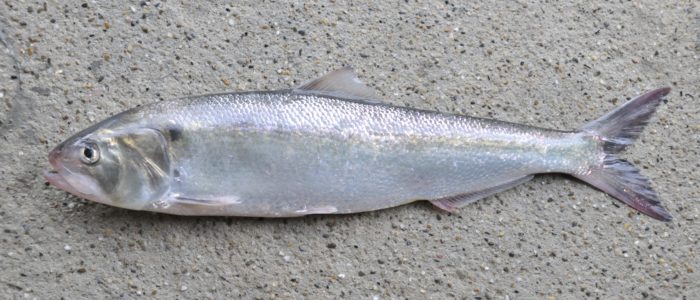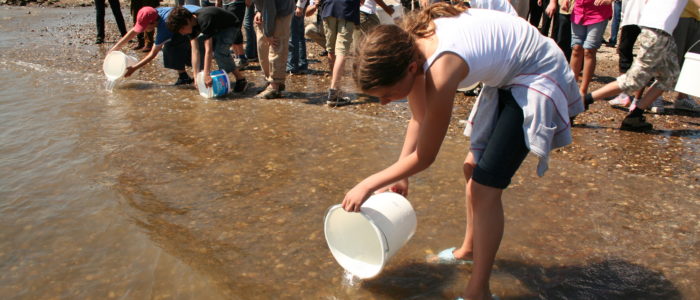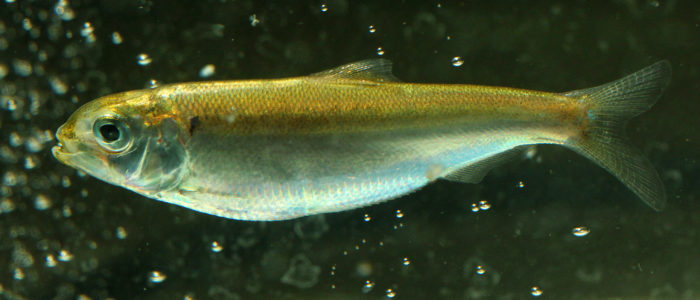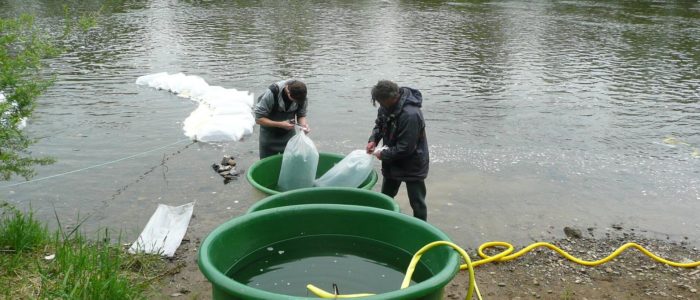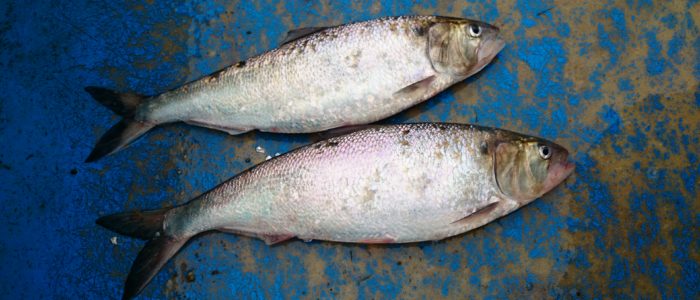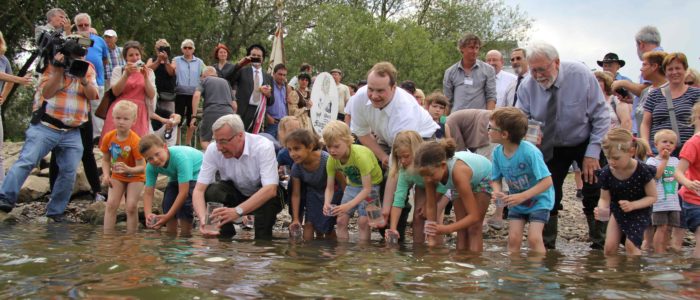Basic stocking actions
The stocking will be continued for a sustainable population development in the Rhine. At present, the stock is not large enough to support itself through natural reproduction. As before, the allis shad larvae will be obtained from Bruch (France). Every year new parent animals (approx. 80) are taken from the Gironde-Garonne-Dordogne system and artificially brought to spawn. In this way, 1 million allis shad larvae are to be obtained each year for stocking in the Rhine, but the exact number varies depending on external factors (e.g. hydro-climatic conditions, condition of the parent animals). The production and delivery of the larvae is carried out by the Association MIGADO. The stocking is coordinated by the project management of the Rheinischer Fischereiverband von 1880 e.V. and carried out together with partners along the Rhine.
Bull-monitoring
The spawn-monitoring is based on counts of the so-called “Bulls”, the characteristic splashing of the allis shad by the hitting with the tail-fins at the water-surface during the spawn-procedure. The number of spawning allis shad can be determined by evaluating the acoustic recordings of the “Bull” using special software. This type of monitoring is already used successfully in France. The method still has to be established in the Rhine. In the Rhine corridor alone, between river kilometres 873 (Waal, NL) and 349 (below Iffezheim barrage) about 70 potential spawning sites were mapped. The first challenge is to identify recent spawning sites within this immense area. The next step is to select sites for permanent acoustic monitoring. The Association MIGADO will provide technical advice and training for the monitoring teams, as they are already successfully operating bull monitoring in the Garonne and Dordogne. The Birkenfeld Environmental Campus (Trier University of Applied Sciences) is responsible for the implementation and coordination of spawn monitoring.
Monitoring of juvenile fish and collection of allis shad samples from the River Rhine
Due to the pelagic way of life, catching allis shad to obtain sample material can be very time-consuming. Conventional methods for stocktaking of allis shad have not been effective so far. Since the majority of all allis shad reports in the recent past were made by professional and part-time fishermen, the remaining fishermen along the Rhine are involved in the monitoring. Professional fishermen will receive a catch premium for the detection of adult or juvenile allis shad. But also dead finds and catches by anglers are often used. An identification aid is provided for better identification. Since 2019, the Association Saumon-Rhin has also provided sample material from the Gambsheim fish pass. The information on the samples is collected by the Rheinischer Fischereiverband von 1880 e.V. and forwarded to the Institute for Environmental Sciences (University of Landau). Here the sample collection and storage as well as the further analyses are coordinated. In the process, all important measures relating to fishing ecology are also recorded. In 2019, a project coordinated by the Rheinischer Fischereiverband von 1880 e.V. will start in which the Schokker- and Hamenfischerei will be used for the targeted detection and monitoring of the stocks of diadromic species of the FFH Directive, including allis shad. This results in important synergies with the allis shad project, such as the expansion of juvenile fish monitoring and the extraction of additional sample material for subsequent investigations.
Genetic analyses: Parental assignment
The distinction between stocking fish and fish from natural reproduction makes it possible to follow the stock development in the Rhine. For this purpose, the genetic profiles of all parent animals bred in the French Bruch are compiled using microsatellite analyses. The genetic profiles of the allis shad catches from the Rhine (juveniles and returnees) can then be compared against this database by means of parental assignment. If the samples cannot be assigned to any parents from the breeding, they come from natural reproduction in the Rhine. The procedure is comparable to the paternity test, which is also used for humans, but is used here for both parents. On the basis of the genetic data obtained, the genetic diversity in the Rhine and in French breeding is also monitored. The genetic analyses and the parental assignment were established for allis shad at the Institute for Environmental Sciences (University of Landau) and are also carried out there.
Microchemistry analyses
In order to increase the knowledge of the life history of Allis shad in the Rhine and the effectiveness of the re-introduction program, microchemistry analyses are performed using otolith (lethal method) and scales (non-lethal method) of Allis shad adult and juveniles caught along the Rhine and its tributaries. One purpose of these analyses is to define the timing of the juvenile migration towards the sea (downstream migration strategies). We define this migration by coupling the juveniles daily age and some element concentrations (Calcium (Ca), Strontium (Sr), Barium (Ba) and Manganese (Mn)) contained in otoliths and related to the concentrations recorded in the ambient water for all habitats crossed by the young Allis shad. Identical analyses will be carried out with scales and will be compared to the results from otoliths analyses. Another purpose is the identification of the adults origin from another population (not natural reproduction in the Rhine) using elements concentration (Ca, Sr, Ba and Mn) and strontium isotope ratio (87Sr:86Sr) of otolith related to the compound of the bed ground of different spawning sites. These results could be compared to identify a potential exchange of individuals between the different populations in the North Sea and Channel areas. These analyses are done at the Birkenfeld Environmental Campus (Trier University of Applied Sciences).
